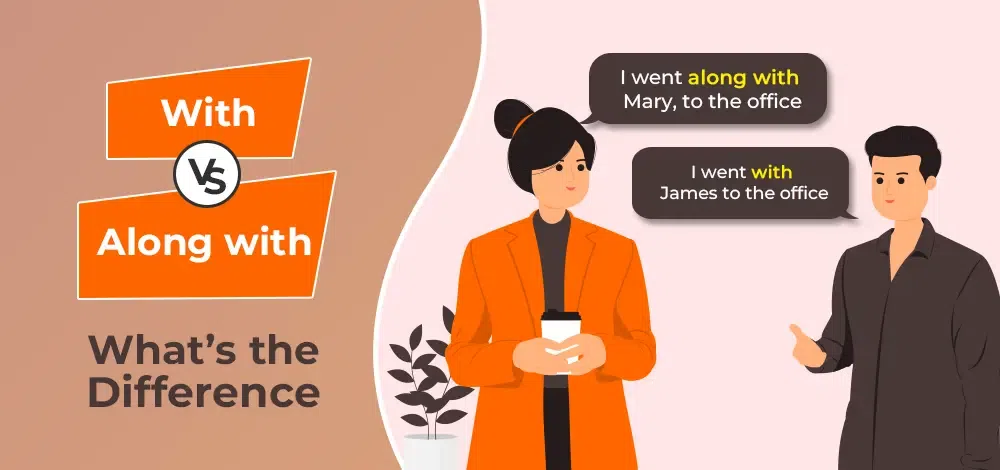Difference Between With and Along With
Last Updated :
02 Aug, 2023
In the English language, there are many words and phrases that can be used to indicate the relationship between two or more things or concepts. Two such phrases are “with” and “along with”. While they may seem similar, they have different meanings and usage in a sentence.

Difference Between With and Along With
Meaning of “With”
“With” is a preposition that is used to indicate a connection or association between two or more things or people. It is also used to show accompaniment or possession.
Usage of “With”
“With” is used to indicate the
- Accompaniment: John is going to the park with his friends.
- Possession: She came with her new car.
- Manner: He walks with confidence.
- Cause: The tree fell down with the strong wind.
- Instrument: She cut the paper with a pair of scissors.
Examples of “With”
- She cooked the meal with the help of her mother.
- He traveled to the airport with his luggage.
- She decorated the room with flowers and balloons.
- The singer performed with a live band.
- The cake came with a side of whipped cream.
- The doctor treated the patient with antibiotics.
- He washed the car with a hose and sponge.
Meaning of “Along with”
“Along with” is a phrase that is used to indicate that something is accompanying or together with something else.
Usage of “Along with”
“Along with” is used to indicate the
- Accompaniment: She went to the party along with her sister.
- Inclusion: The box contained a toy along with some sweets.
- Partnership: The company will work on the project along with another firm.
- Joint Action: The team won the match along with their coach.
- Parallel Action: She studied along with her job.
Examples of “Along with”
- The teacher distributed the papers along with the answer key.
- He bought a new phone along with a protective case.
- The restaurant serves pasta along with a side salad.
- The movie star attended the premiere along with his co-stars.
- The musician performed the song along with a choir.
- The athlete trained along with his coach.
Differences between “With” and “Along with”
With
|
Along with
|
| Preposition |
Phrase |
| Used to Show Connection or Association |
Used to Indicates Accompaniment or Inclusion |
| Used to Indicate Possession |
Used to Indicates Partnership or Joint Action |
| Examples: With a book, With friends |
Examples: Along with her sister, Along with some sweets |
| Used to Indicate Instrument |
Used to Show Accompaniment |
| Used to Indicate a Direct Connection |
Used to Indicate a Secondary Connection |
| Can be Used as an Adverb |
Cannot be used as an Adverb |
| Can be Used at the Beginning, Middle, or End of a Sentence |
Used at the Beginning of a Sentence |
| Can Stand Alone in a Sentence |
Cannot Stand Alone in a Sentence |
| Can be used with both people and things |
Usually used with people |
| Can be used to show the similarity |
Cannot be used to show similarity |
| Used to describe a relationship between two things |
Used to describe an additional thing or concept |
| Can be used with negative expressions |
Cannot be used with negative expressions |
Conclusion:
In conclusion, “with” and “along with” are two phrases used to indicate a connection or association between two or more things or people. “With” is a preposition that is used to show accompaniment or possession, while “along with” is a phrase used to show inclusion or partnership. It is important to understand the difference between the two phrases to use them correctly in a sentence.
Share your thoughts in the comments
Please Login to comment...